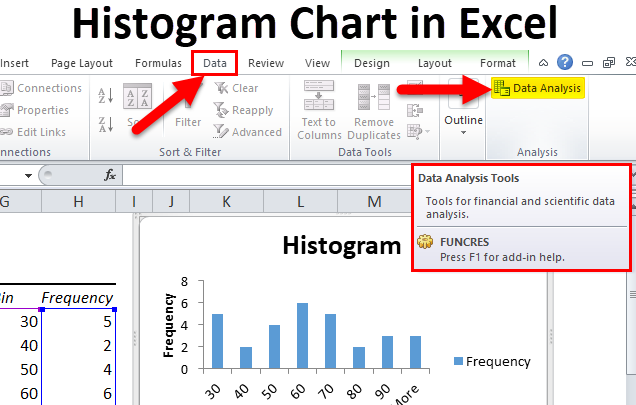
Then go to the Options tab and reduce the Gap. Tip: To reduce the spacing between the bars, right-click on the bars and select " Format Data Series.". To create the histogram, just create a bar chart using the Bins column for the Labels and the Count or Scaled column as the Values. You do it: Step 1: Create an array of bins Reasons I like this method is that you can make the histogram dynamic, meaning thatĮvery time you re-run the MC simulation, the chart will automatically update. This is the method used in the spreadsheet for the sales forecast example. Method 2: Using the FREQUENCY function in Excel. AND, you still need to create an array of bins (which This is probably the easiest method, but you have to re-run the tool each to youĭo a new simulation. Method 1: Using the Histogram Tool in the Analysis Tool-Pak. Update 7/2/15: A Histogram chart is one of the new built-in chart types in Excel 2016, finally! ( Read about it). To skip ahead to the next step in our analysis, move on to Summary Statistics, or continue reading below to learn how to create the histogram in Excel.

The histogram tells a good story, but in many cases, we want to estimate the probability of being below or above some value, or between a set of specification limits.


Keep reading below to learn how to make the histogram.įigure 1: A Histogram in Excel for the response variable Profit, created using a Bar Chart.

We will start off by creating a histogram in Excel. The last step is to analyze the results to figure out how much the profit might be expected to vary based on our uncertainty in the values used as inputs for our model.


 0 kommentar(er)
0 kommentar(er)
